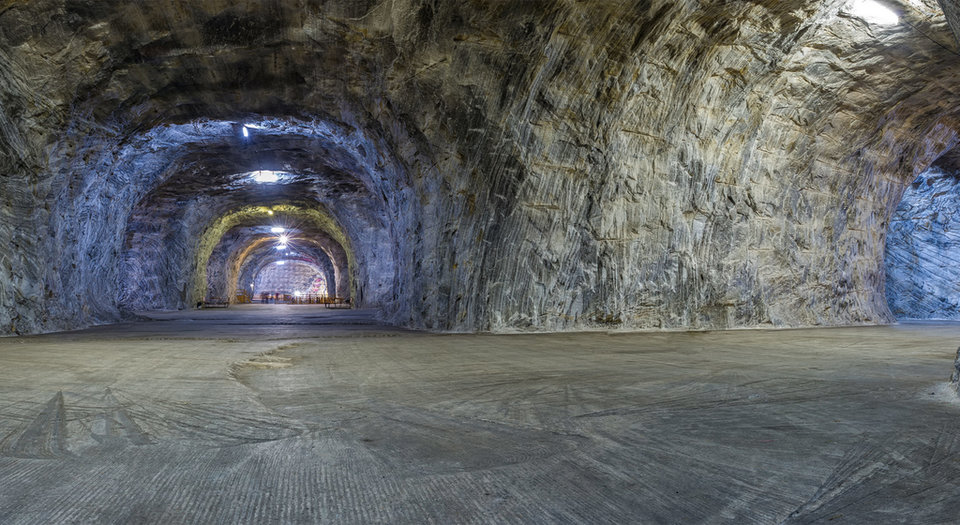
TECHNOLOGY
Out of thin air: tracking underground miners in poor connection areas
A new project developed at Nazarbayev University’s Institute for Smart Systems and Artificial Intelligence, Kazakhstan, could improve the safety of miners underground. The new technology is being developed to determine the location of miners based on an algorithm of available Wi-Fi spot signals and inertial measurement unit sensors. Yoana Cholteeva finds out more about the venture.
M
any mines around the world use manual tracking to monitor the position of miners underground, the task often performed by a mine foreman who, at the beginning of each shift, must provide the dispatcher with a list of people’s names and where they are going to be positioned within the mine.
Once inside, if a miner needs to go to a different work area, they communicate it to the dispatcher via a dial phone in the mine. The dispatcher then updates the list of miners’ current locations.
But as with many manual processes, this type of tracking has several drawbacks, the US Department of Health & Human Services warns. For instance, a miner’s location may be given as being within too large a working section to pinpoint their exact position. Or a worker could forget to notify the dispatcher when moving to another work location.
For this reason, electronic tracking technologies such as reader-based tracking, node-based tracking, and inertial tracking are being developed to overcome the limitations of currently available manual tracking.
Even with existing methods, like GPS and Wi-Fi tracking, in locations such as underground, open-cut mines, or disaster zones with destroyed existing infrastructure, connection often faces disruption and failure.
In multiple cases, the position of mines have not allowed for a secure Wi-Fi connection. For cases like these, researchers from Nazarbayev University’s Institute for Smart Systems and Artificial Intelligence have rolled up their sleeves to come up with an algorithm that could improve the safety of underground workers, determining the location of miners only based on existing Wi-Fi access points.
Developing the algorithm
The researchers started with indoor localisation, using available Wi-Fi signals to determine the position of a person, before moving on to the stages of deep learning, where they train a network to predict the location of someone in an underground mine. Simulating tests at a Nazarbayev University building, they have managed to develop a neural network that predicts the exact positioning of a person inside the university.
“We have collected a data set from three floors and have trained a model with an error distance of about 2.5m,” Mukhamet Nurpeissov, data analyst at the Institute for Smart Systems and Artificial Intelligence, Nazarbayev University, says.
After they reached this error distance, the team decided to improve the model by adding information from inertial measurement unit sensors (IMU), which, after further data collection, increased the scope of displacement while locating a person or a phone.
We have trained a model with an error distance of about 2.5m.
At present, the team is collecting necessary data to start building the machine learning algorithm that will receive the information in the form of available Wi-Fi spots signals, as well as IMU sensors.
“One of the reasons why we added the IMU sensors is that when a device does not receive any Wi-Fi signals, it can localise itself by calculating the displacement via the IMU signals with an overall estimate of the position,” Nurpeissov says
These sensors can also be found in pedometers and smartphones and are used to determine the acceleration of a person and the Earth, they can also successfully determine a person’s location. Using IMU means that in areas without stable Wi-Fi connection a signal can still be found.
“We presented this idea in front of a company, which said that it has a little bit of existing infrastructure with Wi-Fi access points under the ground, so we did our work from there,” he says.
Adapting and evolving
The development of the technology doesn’t go without obstacles as the team says that the main challenge for them is the collection of data in order to train the model. And one of the trickiest subjects is recording the exact position when receiving the signals.
“At the university building we solve it using fiducial markers, where a camera sensor can calculate its relative position to the marker. So, we put these markers all over the place and we know the exact position of these markers, relative to the base point, to calculate our position,” Nurpeissov explains.
He also notes that the different conditions in underground mines could create unpredictable situations, which the team is working to anticipate. For example, there are many access points inside buildings allowing them to localise themselves better, whereas mines have limited Wi-Fi access points with full performance still about to be tested.
Different conditions in underground mines could create unpredictable situations, which the team is working to anticipate.
As part of the trials, for the time being, workers are moving in predefined pairs, after which the positions of this walking trajectory are extracted from the map. Once they obtain a full data set, the team will proceed with the training of the models.
In efforts to meet future demand, the researchers are ensuring that 5G networks can also be used, instead of Wi-Fi access points, as base stations in 5G networks have much higher density.
Instrumental to improving safety where standard GPS systems do not work due to occlusions and signal blockage in buildings, the development of this algorithm gives another hope for improved monitoring, which could substitute manual tracking and help miners feel safer when underground.